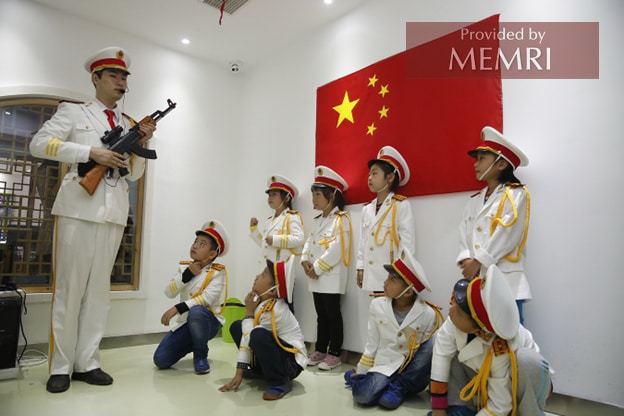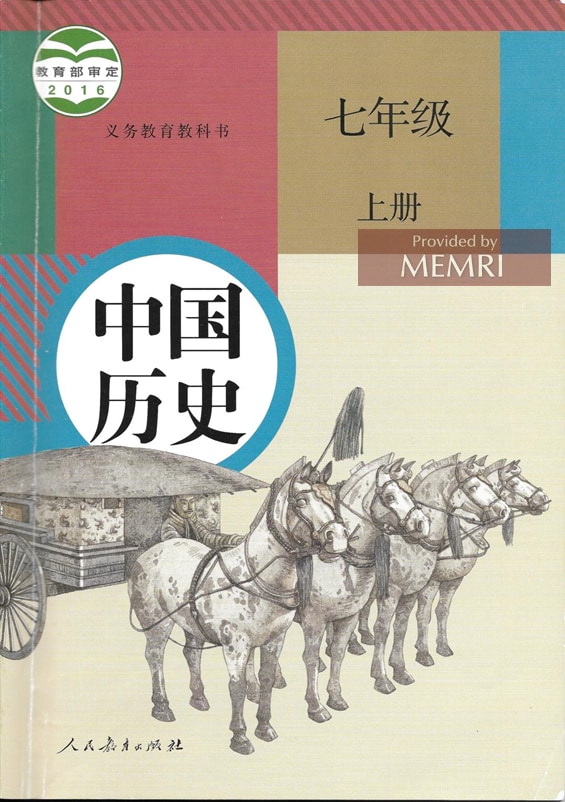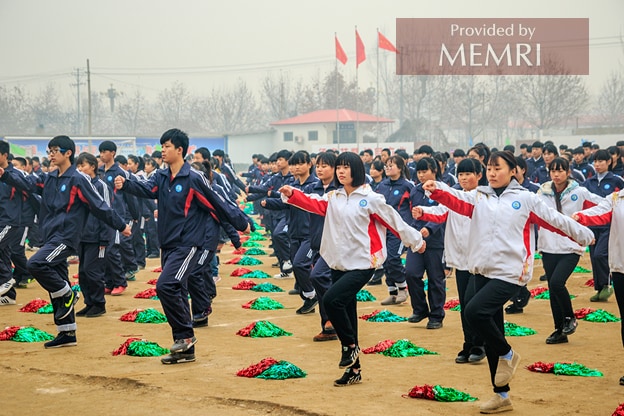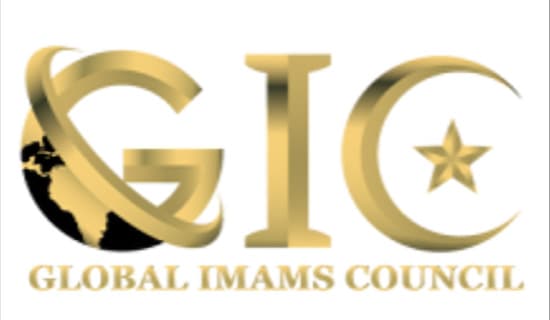Foreword
MEMRI's new Chinese Schoolbooks project seeks to cast a bright light on an underreported aspect of the People's Republic of China (PRC) regime – the content, topics, and ideological framework of current official PRC primary and secondary school texts used to educate Chinese students, particularly in the fields of Politics, History, Chinese Language and Literature, and Law. By translating and analyzing these texts, including explaining key terms and concepts and placing them in their historical and ideological context, researchers provide new insight into one of the seminal areas of Chinese Communist Party (CCP) regime indoctrination.
While Chinese government efforts in policing and manipulating social media and broader popular culture – both inside China and internationally – have received serious attention, the classroom scene has been the subject of less focus; yet education is compulsory and ubiquitous. The Chinese government schoolbooks examined for this study were acquired from within China in 2021 and brought to our offices. Native speakers of Chinese already on staff as part of MEMRI's existing Chinese Media Project, established in 2020, are translating, analyzing and annotating the texts which are then placed in context and explained by investigators and subject matter experts.
The resulting research should enrich public debate on the issue of China, expanding the parameters of understanding the full scope of the challenge the current leadership of the Chinese Communist Party (CCP) presents for the U.S. and the West. It will provide factual, primary content demonstrating the scope of ideological indoctrination occurring "behind the scenes" in the classrooms throughout China's vast hinterland. This is what the CCP is telling its own youth rather than what is being told to the outside world.
No sound policy in democratic countries should be built upon an information void. To be sure, Western governments have their own classified sources of information, and there are many well-established public experts on China, including on Chinese propaganda and indoctrination. But there is always a need for more granular, detailed information. Only when Western audiences in democratic societies have the informational basis to decide to support a certain worldview can policies be successfully formulated and implemented. In this sense, covering China is more than a regional challenge, given the breadth of Chinese economic penetration and influence operations that it has carried out and continues to do so outside its borders, including in the West.
From Hollywood to corporate America to academe, the Chinese Communist Party (CCP) and its organs have also focused on soft power in the U.S. The result of this research fills a glaring lacuna because it looks inward into China rather than just at what it projects to the outside world. These findings will provide the policy community something that they lack now – an additional window into the potential future of China's rising generations, in that this research provides a deeply sourced view into what the party leadership has decided and prioritized as the most important values and information to be communicated to impressionable youth. Our conclusions may not be much of a surprised to experienced China experts, but they should prove of some interest to foreign policy generalists working in English.
The fact that this research is based on primary Chinese government sources coupled with expert research provides policy-makers with a solid basis for their deliberations. The research produced is not rhetoric nor opinions by China haters, nor vacuous regime pronouncements, but analysis and translation of what the Chinese government tells its own people in their own language, even the "little emperors" who will constitute tomorrow's generation of leaders.
Ambassador (ret). Alberto M. Fernandez
Vice President
Middle East Media Research Institute (MEMRI)

JIANGXI CHINA, September 30, 2013: "Jiujiang, East China, primary school students play police, reporters, nurses, photography models, and firefighters, experiencing all the hard work and fun." (Copyright (c) 2017 humphery/Shutterstock
Introduction
MEMRI's analysis of Peoples' Republic of China schoolbooks begins with a deep-dive analysis on how Chinese history is portrayed in official government school textbooks. This initial two-part series will be the first of a series of occasional papers, analyses and translations drawn from the PRC's educational system.
Since 1949, when the Communist Party took control of mainland China, the Party has developed history curricula and schoolbooks following the Stalinist guidelines of the Soviet history schoolbook, All-Union Communist Party (Bolshevik) History: A Concise Course. (The CCP has customarily abbreviated and translated the title as History of the Communist Party of the Soviet Union (Bolsheviks)).
The History of the Communist Party of the Soviet Union (Bolsheviks), which was completed under Stalin's leadership – some chapters were even written by Stalin himself – is a summary of the basic experiences of the Bolsheviks in establishing the party, seizing power, and building socialism. The book is full of the cult of Stalin, often distorting or fabricating important historical facts to that end. Once the book was published in 1938, it became the bible of communist education worldwide. Mao Zedong, the supreme leader of the CCP in Yan'an, wrote in May 1941 in his essay Transforming Our Learning: "The History of the Communist Party of the Soviet Union (Bolsheviks)... is the best synthesis and summing-up of the world communist movement of the past hundred years, a model of the integration of theory and practice, and so far, the only comprehensive model in the whole world."[1]
Under Mao's guidance, the CCP published its own version of history in the 1950s. As reflected in the schoolbooks published by the Chinese Ministry of Education in 2016, the core principles of CCP pedagogy have remained the same for almost eight decades.

Chinese History, 7th Grade, 1st Volume; (Approved by the Ministry of Education in 2016; A Textbook for Compulsory Education; People's Education Press)
A Packaged Past – Part I: How 'Chinese History' Treats Ancient History
-
Advocates the historical greatness and advanced nature of Chinese civilization
-
Promotes national unity
SUPPORT OUR WORK

Currently, Chinese history education is conducted in seventh and eighth grades in Chinese schools, using four schoolbooks for a total of 90 lessons. In terms of chronology, the starting point is with the Yuanmou people 1.7 million years ago, and the ending point is 2017.
The CCP's Chinese history lessons follow historical materialism while also strictly believing in the centralization of power and a unified China. Under this premise, there are several basic concepts to which the compilation of CCP history schoolbooks adhere.
First, in Chinese History, a narrative for the history before modern times, is to describe the "ancient and glorious" Chinese civilization as the only existing civilization in the world that has never been interrupted. During this history which has lasted for thousands of years, China has not only made outstanding contributions to the progress of human civilization with its profound philosophical systems, rich scientific, technological, cultural, and artistic achievements, and unique institutions; it has also been consistently ahead of the rest of the world in its development.
Secondly, the CCP has a very clear purpose for teaching ancient history, which is to lead students to "shape the historical cognition of the whole nation" and push the concept of a unified China through "the formation and development process of the pluralistic unity of the Chinese nations and Chinese civilization and the unity of the family and the country." These history schoolbooks keep showing that unity has been the norm mainstream throughout Chinese history.
In schoolbooks, even prehistory is heavily shrouded in propaganda. The beginning of a Chinese history schoolbook is an effort to construct a China-centered theory of the origins of human civilization. Starting with prehistory, the schoolbooks use very vague language to lead students to think that the Chinese originate from ancient humanoids discovered within China, rather than from Africa as with all other people. The introduction of the first unit "On the Origin of Early Humans and Civilizations in China" is as follows: "The vast land of China once gave birth to early human beings, and the Peking Man is one of its typical representatives. From the archaeological discoveries of the Peking Man site, we can see the living and working conditions of early humans, as well as their evolutionary characteristics. About 10,000 years ago, humans in China gradually learned how to cultivate crops, raise livestock, grind stone tools, burn pottery, and begin a settled life. (Chinese History, 7th grade, Vol. 1, pg. 1)
The teacher's guide book includes even more explanations about the origins of Chinese people, asking: "Is the birthplace of mankind in Africa or in Asia (?)" The guide cites the long-abandoned scholarship of late nineteenth century German naturalist Ernst Haeckel, who believed that human beings may have originated in Asia – and China in particular. Three additional far-fetched reasons are also cited in this schoolbook, which was approved in 2016 and given a fourth printing in 2019. The content of this schoolbook on the origin of human beings does not mention the human genome sequencing projects and the theory of the African origin of modern humans. Regarding the teaching interpretation of the first lesson "Representatives of Early Humans in China – Beijing People," the teachers' guide book states: "Ancient Chinese history began with the emergence of human beings in our country..." As for the lesson's goal, it is to ask students to "recognize that China is one of the birthplaces of mankind..."(Teachers' Guide for Chinese History, 7th grade, Vol. 1, pg. 16-17)
What's even more interesting than the lessons themselves is that Xi Jinping, the general secretary of the Communist Party of China, himself promoted similar statements. On September 28, 2020, Xi gave a speech at the 23rd collective study session of the Political Bureau of the 19th Central Committee in which he said:
"Firstly, archaeological discoveries give us a historical context for the origins and development of Chinese civilization. The major achievements of archaeological discoveries in China demonstrate China's one million years of human history, ten thousand years of cultural history, and more than five thousand years of civilization history. The latest archaeological results show that China is the homeland of all eastern humans. It ranks alongside Africa as the earliest place of human origin. Peking Man invented artificial fire techniques five hundred thousand years ago, one of the earliest groups to do so in the world. As early as 10,000 years ago, our ancestors planted millet and rice. China tied with West Asia and North Africa for the first to develop agriculture. China's inventions and discoveries in musical instruments, canoes, water conservancy facilities, and astronomy are also among the earliest, if not the earliest, in the world. Archaeological achievements show the formation and development of the Chinese nation and of Chinese civilization. They demonstrate the forms of diversity that have existed in the unity and integration of family and state, and reveal the values on which Chinese society depends for survival and the cultural genes of the Chinese nation that have become daily customs. They also help us better study the history of Chinese civilization, which continues to shape the entire nation. Historical cognition provides us with primary materials which have very important political, cultural, social, and historical significance."
Whether Xi Jinping himself is aware of the contemporary consensus that Homo sapiens is the sole ancestor of modern man, we do not know, but it is impossible for the editors of Chinese history schoolbooks to be ignorant of this fact. This shows that Xi Jinping's narrative of Chinese history has become a state religion that can completely ignore common sense. This is a basic starting point for outsiders to understand the CCP's Chinese history schoolbooks. We feel it is necessary to stress again and again that in the West, there are various explanations and interpretations in historical teaching and research, but in China, schoolbook production is monopolized by the government, and teachers and students are not allowed to question the contents of their lessons.
This speech by Xi Jinping can be regarded as a concise teaching guide for Chinese history schoolbooks.
In order to prove the "richness and longevity" of Chinese history, the Chinese government launched a five-year national project in 1996, the "Xia-Shang-Zhou Chronology Project," and announced this project as a major project of the National Ninth 5-Year Plan.
However, when this "project" was supposedly completed in 2000, there was huge controversy among Chinese academics over the project, which concluded that the Xia Dynasty was established in 2070 BC and set the dates for the reigns of all Shang kings from Pan Geng to King Zhou. Because of these disputes, the full version of the research report has not been released so far. The "simplified version" only gave a brief overview of the activities of the early Xia and Shang dynasties. Therefore, there is no conclusive answer among historians whether the "Xia Dynasty'' is a real dynasty, and currently, most historians agree that there are not enough written and material archaeological records to prove the existence of the Xia.
However, the teachers' guide for the seventh-grade Chinese History states regarding the Xia Dynasty: "[Sima Qian's] Historical Records... record the history of the Xia Dynasty, and listed 17 kings of the Xia Dynasty according to the order of succession to the throne. For a long time, the existence of the Xia Dynasty was never in question. Only at the beginning of the 20th century did the Japanese scholar Shiratori Kouji put forward the so-called "Theory of Obliteration of Yao, Shun and Yu." After that, there was an "Ancient History Discernment Movement" in China, which advocated doubting conventional history, during which historian Gu Jiegang clearly expressed his view that the Xia Dynasty did not exist."
The Chinese history schoolbooks have thus disregarded any controversy and lack of evidence, and taken the Project on the Xia Dynasty as the orthodox chronology. The second unit of the first volume of the seventh-grade Chinese History is "Xia, Shang and Zhou Dynasties: Early State and Social Change. The text says: "Around 2070 BC, King Yu established the Xia Dynasty." The text refers to the unearthed cultural relics of Erlitou, an ancient capital city site excavated near Luoyang, Henan Province, which "reflects the progress of Chinese civilization during the Xia Dynasty."
History schoolbooks also strive to prove that the ancient Chinese civilization was ahead of the rest of the world at the time. In the same speech on Chinese archaeology, Xi Jinping stated that archaeological discoveries fully demonstrate that China "has been at the forefront of the world in the development and achievements of ancient civilizations in the Neolithic Age, Bronze Age, Iron Age and other ages... These major achievements demonstrate the enterprising spirit of the Chinese nation, which is pioneering and innovative, advancing with the times, and always seeking self-improvement."
Song Jian, a Chinese official and scholar who presided over the Xia-Shang-Zhou Chronology Project, spoke at the project's opening ceremony, borrowing from Joseph Needham's words: "Needham's research unraveled the greatest mystery in human history that neither Westerners nor the Chinese knew about. Contemporary world civilization is a synthesis of Chinese historical civilization and European civilization. When seventeenth-century Western missionaries presented clocks to the Chinese emperor, the Chinese were amazed. As everyone knows, it was the Chinese themselves who first invented the mechanical watch. European agriculture, shipbuilding, oil extraction, multi-stage rockets, cannons, parachutes, winemaking, papermaking, printing, chess, steam engine principles, astronomy, decimal mathematics, abacus, etc., were all imported from China since the Renaissance. Without China's shipbuilding technology, compass, and other inventions, the various inventions and industrial revolutions in Europe since the seventeenth century would not have happened at all, and there would be no British age of Knights and the era of colonial empires. " Despite the fact that Needham was virtually alone among sinologists in this opinion, Song Jian went on to say, "The descendants of the Yan Emperor and the Huang Emperor will feel honored to read these words."
The CCP's history schoolbooks spend a lot of class time promoting China's bronze casting technology, oracle bone inscriptions, and the so-called "Four Great Inventions." According to the teacher's guidelines, teachers must clearly require students to recognize and understand these "highly developed civilizations in the Xia, Shang and Zhou dynasties, affirm the vitality of Chinese civilization with its long, continuous history, and enhance students' national pride and national self-confidence." (Teachers' Guide Book, Chinese History, 7th grade, Volume 1, pg. 64) In the part about oracle bone inscriptions, the schoolbook requires teachers to guide students to love Chinese characters themselves, clearly stating, "If you love Chinese characters, you will love oracle bone inscriptions." (Ibid, pg. 68)
The purpose of teaching this lesson is to establish a close connection between the history of Chinese characters and the historical narrative of a unified China: "Unification is at the center of China's historical development, and the Chinese characters we use have made an indelible contribution in this regard."

XINGTAI CITY, CHINA – December 2016: "Baixiang County Board of Education school sports activity evaluation. Unidentified students do various activities." (Copyright (c) 2017 jianbing Lee/Shutterstock)
In 2019, Chinese media reported that a teacher from the University of Electronic Science and Technology of China discussed with students on a QQ group how to choose a thesis topic. Their topic of the discussion at that time was "the essence of innovation." He said: "None of the 'Four Great Inventions' were important in leading inventions in the rest of the world, nor have they led to any de facto productivity or collaboration between China and the West," and "there was no substantial innovation in ancient China." Some students questioned his views and posted screenshots of their chat records, accusing the teacher of insulting the "Four Great Inventions." As a result, the University of Electronic Science and Technology of China issued a statement, finding that the teacher violated their code of ethics, and punished him, suspended his teaching work and disqualified him from accepting graduate students.
After entering the history of Qin and Han Dynasties, the schoolbooks begin to focus on advocating and praising a unified Chinese Empire. In the third unit "The Establishment and Consolidation of a Multi-ethnic State" in the seventh-grade Chinese history volume, the schoolbook says this about the unification of China during the Qin Dynasty:
"The Qin destroyed the Six Kingdoms
"Successive wars during the Warring States Period affected economic development and social stability. People of the vassal states hoped to end the war and live a peaceful, stable life. After Qin State emperor Yingzheng took the throne, he made full preparations for eradicating the Six Kingdoms. He recruited talents from various states, assigned each of them important tasks, and listened to their suggestions to actively plan for reunification. After the Shang Yang Reform, the Qin State surpassed the Six Kingdoms in strength. The conditions for reunification were met...In 221 BC, the Qin completed the great cause of reunification.
"The Qin's reunification ended the chaotic situation of long-term battles since the Spring and Autumn Period and the Warring States Period, and established the first unified multi-ethnic feudal country in Chinese history." (Chinese History, 7th grade, Volume 1, p. 44)
Next, the schoolbook posts a question to students: "What are the benefits of national unification for economic and cultural exchange among regions and ethnic groups?" The schoolbook sums up Qin Shihuang's cruel rule as follows:
"Qin Shi Huang completed the cause of unifying China. He implemented various measures to consolidate this unification. He created the system of prefectures and counties and other systems used by later generations. However, his rule is characterized by over-eagerness for quick results and tyranny." (Chinese History, 7th grade, Volume 1, p. 50)
Various older Chinese history books are full of records of the Qin's unification wars and brutal acts of rule. However, though the CCP's history schoolbooks mention that "the rulers of the Qin Dynasty practiced brutal rule," they do not mention a word about the huge damage to the lives of ordinary people caused by the war of reunification. On the contrary, it implies that Qin Shi Huang's atrocities were to comply with the people's desire "to end the war and live a stable life."
According to traditional Chinese history books, the Qin killed 1.6-1.8 million people in 22 wars during the conquering Six States era. (See Jian Bozan Chinese and Foreign Historical Chronology.) In 260 B.C, during the Changping Battle, the Qin army buried 450,000 Zhao Kingdom's soldiers and civilians alive. In 234 B.C, during the Pingyang Battle, the Qin army beheaded 100,000 Zhao soldiers and civilians. In 293 B.C, during the Yique Battle, the Qin army beheaded 240,000 Han and Wei Kingdom's soldiers and civilians. In 274 B.C, during the Huayang Battle, the Qin army beheaded 150,000 of the Wei Kingdom's soldiers and civilians. In 312 B.C, during the Danyang Battle, the Qin army beheaded 80,000 Wei Kingdom's soldiers and civilians.
There are even more outlandish historical records stating that throughout the Qin Kingdom's war of conquest in the Six States, the Qin caused death and injury to two-thirds of the population. According to Su Qin and Zhang Yi, at the start of the war, there were a total of more than five million soldiers and more than ten million civilians in all Six States. By the end of the war, as the Qin divided the Six States into 36 commanderies, the war caused the death and injury of two-thirds of the total population. Under such circumstances, the Qin's ruler continued to establish and carry out cruel, barbarian laws and punishments. It had a 50% rate of taxation. It built the Great Wall in the north with the forced labor of more than 400,000 peasant workers. It used more than 500,000 soldiers to guard its southern borders. It used the forced labor of 700,000 peasant laborers to build Afang palace and Lishan Tomb. More than 10 years of war resulted in so much death and destruction. Dead bodies were piled up on the roads or in the rivers. (The Book of the Later Han Dynasty, citing The Emperor Century.)
The schoolbook describes the tyranny of the Qin Emperors, but treats their tyranny and the process of unification separately. It does not explain how such tyranny relates to the purpose of unity – the so-called desire of "people… to end the war and live a peaceful and stable life." It completely ignores "people of various kingdoms" who, in fact, did not want to be unified and ruled by the Qin.
The CCP's history schoolbooks used to define the unification of China only centered on the Central Plains (Zhongyuan) culture. According to their account, the Great Wall was a border defense and symbol of resistance against foreign invasions. Many generals who fought against the invasion of the northern clans were hailed as national heroes. So-called "China" had relatively small territory. But recently, under the latest narrative of the empire of "multiple unity," new ways of defining China's history appeared. The conflict with the northern clans is no longer understood as a resistance against foreign invasion. The famous saga of "Five Clans Invading China" became "the northern nomads migrating inland." However, while saying that the Huns "migrated inland," the schoolbook still clearly retains the tradition of centering on Han culture. In the texts about the Eastern Jin Dynasty, words such as "Northern Expedition," "retake," and "re-occupying the Central Plains" still appear constantly. In fact, the territory of the Eastern Jin Dynasty of the Han people at that time was less than one third of that of the Western Han Dynasty. (Chinese History, 7th grade, Volume 1, Lesson 17 and Lesson 18)
Regarding the unification and demise of the Sui Dynasty, even though the Sui Dynasty only existed for a short period of 30 years and was ended by wars and chaos, the CCP's history schoolbooks still say: "The unification of the Sui Dynasty ended the long-term division since the Three Kingdoms, the Jin, Southern and Northern Dynasties, and promoted social and economic development; ethnic blending and national reunification was the common desire of the people of all ethnic groups..." (Teachers' Guide Book for Chinese History, 7th grade, Volume 2, pg. 2)
The chronicles and narratives about dynasties in Chinese history schoolbooks are entirely based on the principle of unification; that is, that unification is legitimate and normal, while division is illegitimate and abnormal. In fact, if one goes through the chronology of Chinese history, the years of division far outnumber the years of reunification. "Unification" in schoolbooks is only a historical fabrication to serve the purpose of those in power.
Depicting the conquest of China by the Mongols as a glorious victory of great unification is a creation of the CCP's plot to "make the past serve the present." The CCP's history schoolbook describes Genghis Khan as follows: "The unification of the various Mongolian tribes was completed by Temujin. When he was young, Temujin had experienced many hardships because of his father's death in tribal disputes. He realized from early experience that unity of the various tribes on the grassland can bring peace, harmony, and a stable life to all. For many years, Temujin led his troops to fight, defeat, and conquer all powerful tribes. In 1206, he completed the unification of Mongolian grasslands. He established a Mongolian regime and became its first emperor. He was given the royal, honorable name of Genghis Khan." (Chinese History, 7th grade, Volume 2, pg. 47)
In the CCP's history schoolbooks, the murderous Genghis Khan was credited with "bringing peace" and "making the people live a stable life," completely avoiding the brutal killings carried out by the conqueror. It seems that as long as the goal is unification, the cost of human life can be ignored, so there is no need for schoolbooks to tell students the bloody price behind it. The purpose of unity mentioned in this narrative– "peace and stability"–has always been controversial and never been fully proven.
The CCP's history schoolbooks cannot completely avoid the history of the Han people being conquered repeatedly by the "barbarians" from the north. In this regard, the schoolbooks clearly adhere to the principle that Legitimacy Belongs to the Victor: any foreign invasion, as long as it succeeds, will be accepted as a legitimate part of Chinese civilization. As for why the northern nomads, who were in an absolute minority, were able to establish a "conquering dynasty" many times during the changing dynasties that have continuously appeared in Chinese history, and brought Chinese civilization to new peaks during their reign, these schoolbooks do not answer.
In the seventh-grade Chinese History book's second volume, there is a chapter "The Destruction of the Ming Dynasty." The introduction states that "the Ming Dynasty was the most powerful country in the world at that time, with a prosperous economy and a developed culture." However, the Ming Dynasty still declined and ended. Schoolbooks tell students that the Ming Dynasty ended when the emperor "indulged in personal pleasures and neglected the government" while the court officials and nobles formed cliques for personal gain and annexed land. The more immediate cause of the demise of the Ming Dynasty was the uprising of Li Zicheng and Zhang Xianzhong.
In this chapter, the text states: "After Li Zicheng led the peasant army into the central plains, he popularized the slogan 'Redistribute the Land and Exempt Us from Taxes,' which was enthusiastically supported by a vast number of peasants. His army quickly grew to more than one million people. Li Zicheng enforced strict military discipline which prohibited the wrongful killing of anyone, occupying civilian residences, and looting. He also distributed money and food to the poor. The army fought bravely in more than 10 provinces including Henan and Huguang." (Chinese History, 7th grade, pg. 47). This description completely ignores certain tragic historical facts. At the end of the Ming Dynasty, China's population was estimated to be nearly 100 million. The wars and massacres carried out by various rebellions and the Ming army caused a total of 25 million deaths. By the end of the Ming Dynasty, Sichuan's population had dropped sharply by several million. The number of people slaughtered by another peasant uprising army leader, Zhang Xianzhong, was conservatively estimated to be from 600,000 to over one million.
Although the Li Zicheng uprising caused great humanitarian and social disasters, and even led directly to foreign rule, the CCP's history schoolbooks show great sympathy for the rebels. This has to do with Mao Zedong and the CCP's identification with Li Zicheng. In fact, Mao Zedong made no secret that he was, in a sense, the successor of Li Zicheng and a successful practitioner of the idea that "to rebel is justified." This is also one of the most striking examples of this schoolbook's historical narrative being full of paradoxes. On the one hand, the schoolbook insists that only a unified, autocratic rule can provide peace and order, but at the same time, it believes that only through rebellion, seizing power, and changing dynasties can fairness and justice be achieved. We can see that this contradiction reflects the plight of the CCP's regime. The CCP is both a practitioner of the violent seizure of power and the autocratic ruler of society. It is difficult to find a self-consistent historical logic to justify their legitimacy. We can see the same contradiction in the historical narratives about the Taiping Heavenly Kingdom and the Boxer Rebellion.
After the fall of the Ming Dynasty, the Manchus established the Qing Dynasty. The 18th lesson of the second volume of the seventh-grade history schoolbook begins with "Consolidation and Development of a Unified Multi-ethnic State," which focuses on "Zheng Chenggong (aka. Koxinga) re-conquering Taiwan; the establishment of administration of the Qing Dynasty in Taiwan; the canonization of the Dalai Lama and the Panchen Lama and the establishment of ministers in Tibet; the consolidation of the northwest frontier." The "emotional attitudes and values" proposed by the teachers' guide book for this lesson require students to realize that "a unified, multi-ethnic country was created by people of all ethnic groups" and "Taiwan has been an inalienable part of China's territory since ancient times." Students also must "recognize that reunification is a major trend in the development of our Chinese history, and students should strengthen their sense of responsibility for maintaining national unity and national unity."
But in the case of Zheng Chenggong retaking Taiwan from the Dutch and continuing to fight against the Qing government in Taiwan in the name of the Ming Dynasty, how can schoolbooks use the "principle of unification" to bridge this contradiction? The teachers' book says, "Students will have doubts about the descriptions of 'seizing Taiwan as a base to fight against the Qing Dynasty.' Teachers should give students immediate guidance towards the correct evaluation." (The Teachers' Guide for Chinese History, 7th grade, pg. 246) In the part involving the northwest frontier, the teachers' guide requires teachers to inform the students, "History tells us that the rebellion of separatists to split the motherland and oppress the people was unpopular. The people of all ethnic groups in our country have always opposed separatist rebellion and defended the unity of the motherland. The struggle of the Kangxi Emperor and Qianlong Emperor to maintain the unity of the motherland and quell the rebellion is in line with the wishes of the broad masses of the people, and any plot to split the motherland cannot possibly succeed."
[1] Selected Works of Mao Zedong (vol. 3), Beijing: People’s Publishing House, 1991, pp. 802-803.




